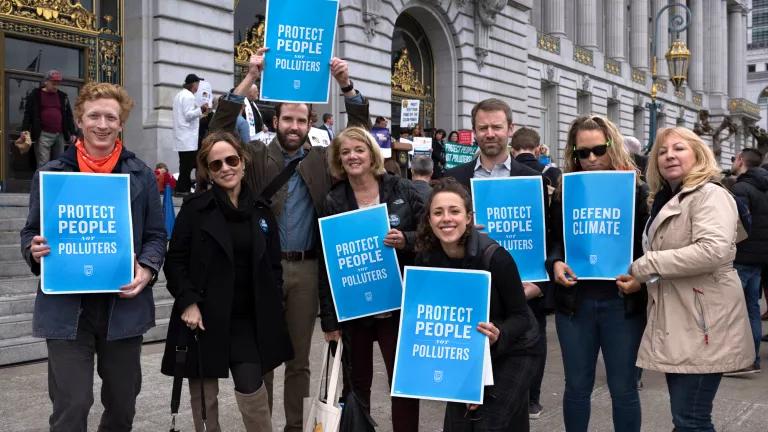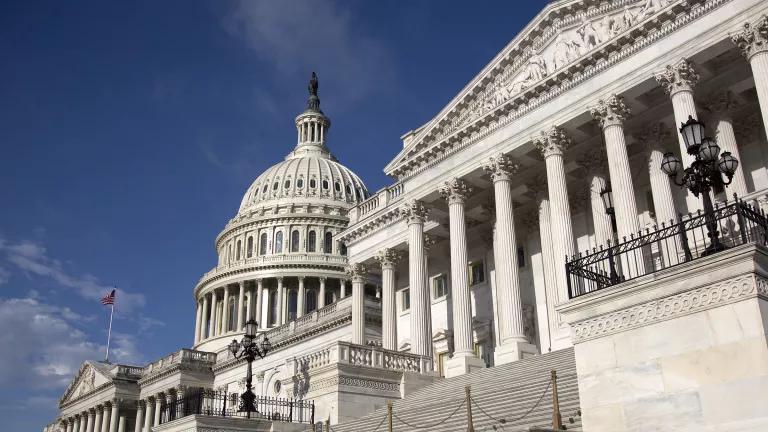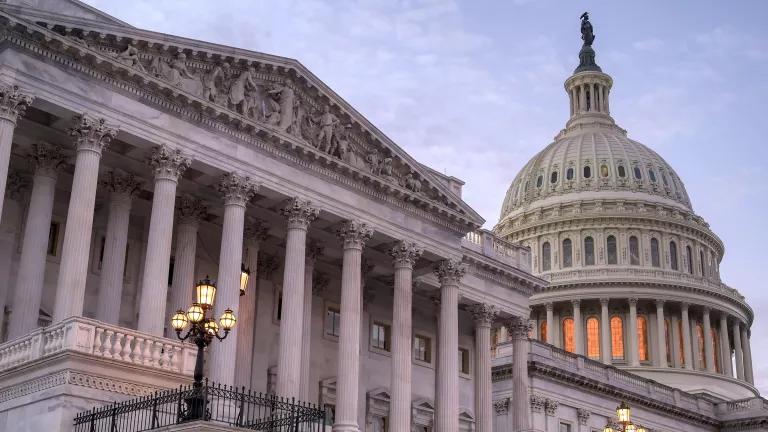Climate Change Won't Play Fair When It Comes to Kids' Health
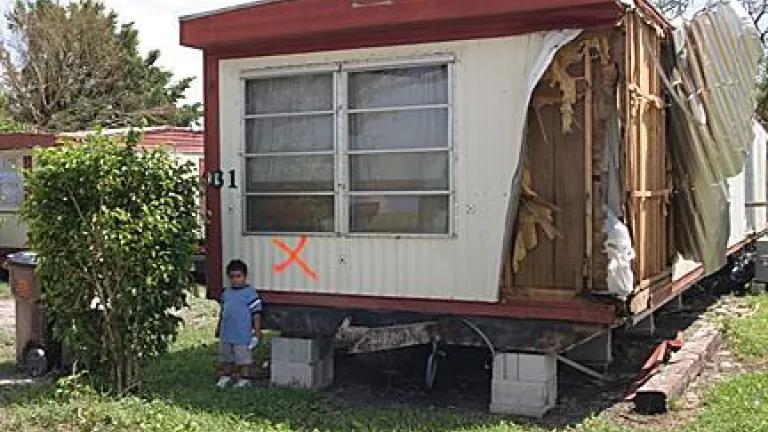
Climate change negatively affects everyone’s health in a variety of ways, fueling things like heat-related illness and death, respiratory distress, increased incidence of mosquito- and tick-borne diseases, and mental health conditions. However, these impacts don’t affect everyone in the same ways or to the same extent. Factors like age, race and ethnic identity, socioeconomic status, and geographic location can exacerbate impacts and hit certain individuals harder than others. Three separate, major climate reports—the United Nation’s Intergovernmental Panel on Climate Change 1.5°C report, the U.S. Global Change Research Program’s Fourth National Climate Assessment, and the 2018 Lancet Countdown On Health and Climate Change—made headlines over recent months and reaffirmed that climate change is affecting human health, especially for already vulnerable populations.
On November 28, I attended American University’s Center for Environmental Policy symposium, “Children’s Health and Equity in Our Changing Climate.” Two keynote speakers and two all-star panels discussed how children disproportionately feel the long-term health effects of climate change, how their futures can be affected, and what can be done to alleviate this burden on our youngest and future generations.
A few key points really stood out to me.
We must think of the environment in terms of humans and their health
Dr. Jerome Paulson, a Professor Emeritus of Pediatrics and of Environmental & Occupational Health at George Washington University, began his presentation by asking everyone to close their eyes and picture ‘the environment.’ Most people’s minds, mine included, immediately go to trees, plants, animals, oceans, iconic national parks—all of the physical, beautiful, stereotypical “nature” images that we associate with the environment. He asked for a show of hands of how many in the audience had pictured humans while pondering the environment. Only a few hands went up.
“We don’t deal well with environmental problems, because we don’t picture humans in the environment.”
It’s easy to separate yourself from “the environment,” especially if you live in an urban area, drive your car or take public transit often, or work indoors. In reality the environment is all around us, in the air we breathe and the water we drink, but also in the form of natural phenomena that are made worse by climate change.
Children are at heightened risk for negative health impacts from climate change
Children are particularly at risk for climate change-induced health problems for a variety of reasons. Kids spend significantly more time outdoors than adults do, increasing exposure to poor air quality, heat, and mosquito- and tick-borne disease. In the United States, 1 in 12 children are living with asthma, and climate impacts on air quality can exacerbate respiratory symptoms, especially in areas prone to wildfires or drought. As the United States sees more dangerously hot days, the threat of heat exhaustion, stroke, or hospitalization increases, especially for children enjoying their summer vacations outdoors. As temperatures warm, tick and mosquito populations are also altering their range patterns. Pests that carry diseases like Lyme and West Nile are showing up in new parts of the country, increasing the possibility of infection.
Climate-fueled phenomena like wildfires, drought, extreme heat, and extreme rainfall events can also contribute to unsafe water quality, promoting the growth of unhealthy algae in recreational waterways and causing failures in water treatment infrastructure. Children swallow almost twice as much water as adults while swimming, and ingesting compromised water can lead to intestinal distress, including symptoms like diarrhea or vomiting.
Climate and weather disasters have lasting effects
Mark Schleifstein, an environmental reporter for New Orleans’ The Times Picayune, discussed in detail the impacts—immediately felt in 2005 and lingering today—from Hurricane Katrina. This catastrophic storm was 13 years ago, but residents in Louisiana are still recovering, still rebuilding, and even still displaced to other parts of the country. Vulnerable populations are often the hardest hit by climate disasters, with the smallest amount of financial, medical, or political resources to fully recover. Evacuees often only had the clothing on their backs and returned to find their belongings lost and their homes, churches, and schools destroyed.
Many families were separated, increasing risk for adverse mental health effects like anxiety, depression, and Post-Traumatic Stress Disorder (PTSD), especially among children. Children in communities experiencing climate-related disasters can also witness crime or substance abuse, lose sentimental possessions, and face disruptions in their family structure, schooling, and community, further contributing to these mental health conditions.
Louisiana could easily experience another Katrina-like disaster. New levees and flood management systems have been built, but the Army Corps of Engineers rates this system as “high risk” for inundation. Additionally, climate change is making powerful hurricanes and rain events larger, stronger, and more frequent.
“Clean energy is inevitable, but justice is not.”
Leslie G. Fields, Esq., the Director for Environmental Justice and Community Partnerships at the Sierra Club, shared the above quote from a friend of hers. It’s necessary that climate issues are viewed through an equity lens, so disenfranchised communities are not left behind.
The health threats of climate change build upon existing pollution problems, which have historically been found in low-income communities or areas with high minority populations. For example, the location of schools can pose additional risk to the health and wellbeing of children. Across the country, schools are built upon land near oil and gas operations, brownfields and Superfund sites, highways and railroads, and other sources of air pollution and environmental toxicity because this land is more affordable for school systems that are often strapped for funding. Existing demographic inequities compound this; one study found that five of the 10 worst-polluted school counties have non-white populations over 20 percent. Children of color therefore are more likely to experience decreased lung function, ability to concentrate, and other afflictions like ADHD just from attending a school in a dangerous location.
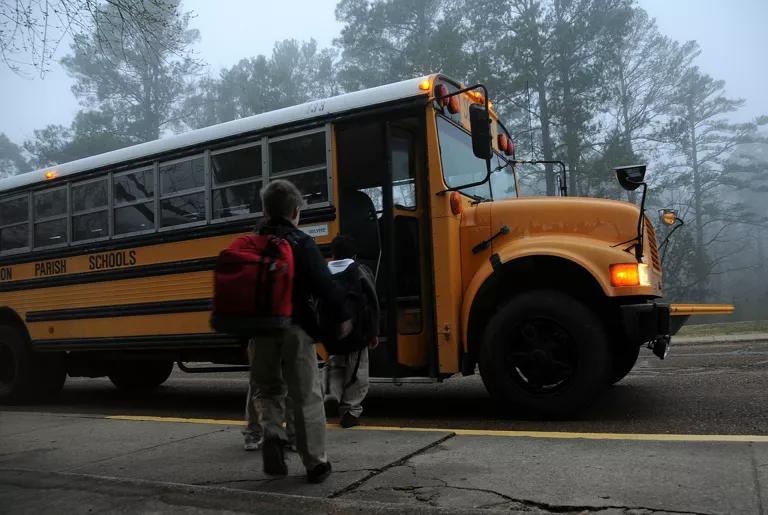
Vulnerable populations receive the brunt of negative health impacts from climate change, and it’s time to lift that burden. But a just transition towards a clean energy future is imperative. This means creating pathways and providing training for workers currently in dirty energy, health-harming sectors so they can find sustainable employment in other fields. It includes bringing clean energy to low-income and minority communities and removing polluting industry from their (and their schools’) backyards.
The Environmental Protection Agency (EPA) is the federal agency responsible for protecting Americans from air pollution—including the greenhouse gas pollution that is fueling climate change. But under Trump’s watch, EPA has gone from admitting its regulatory rollbacks will disproportionately affect children to entirely removing any mention of their deregulatory action’s harmful impacts. The research is clear that climate change has only negative effects on human health, and people are listening. Americans care about their health and the health of their families—it’s about time the Trump administration did too.
